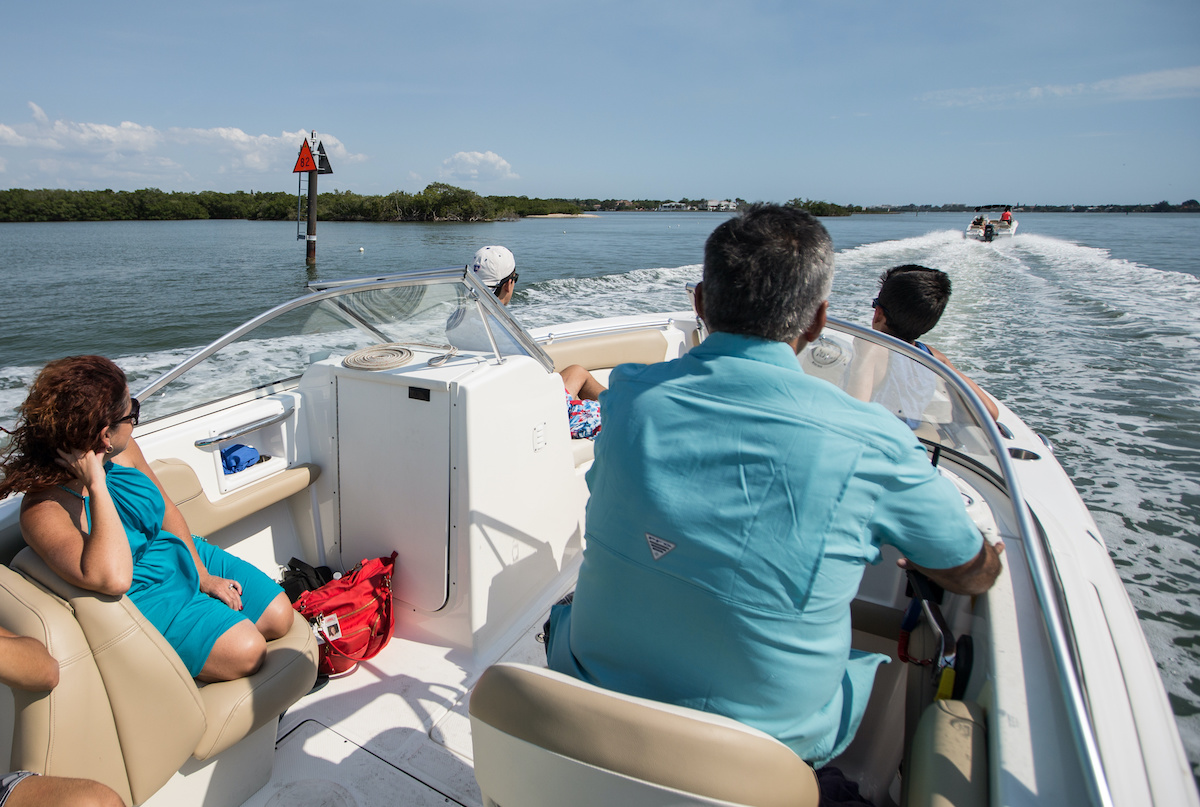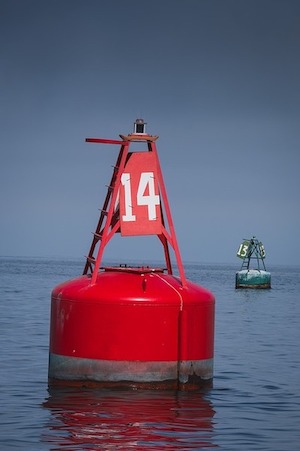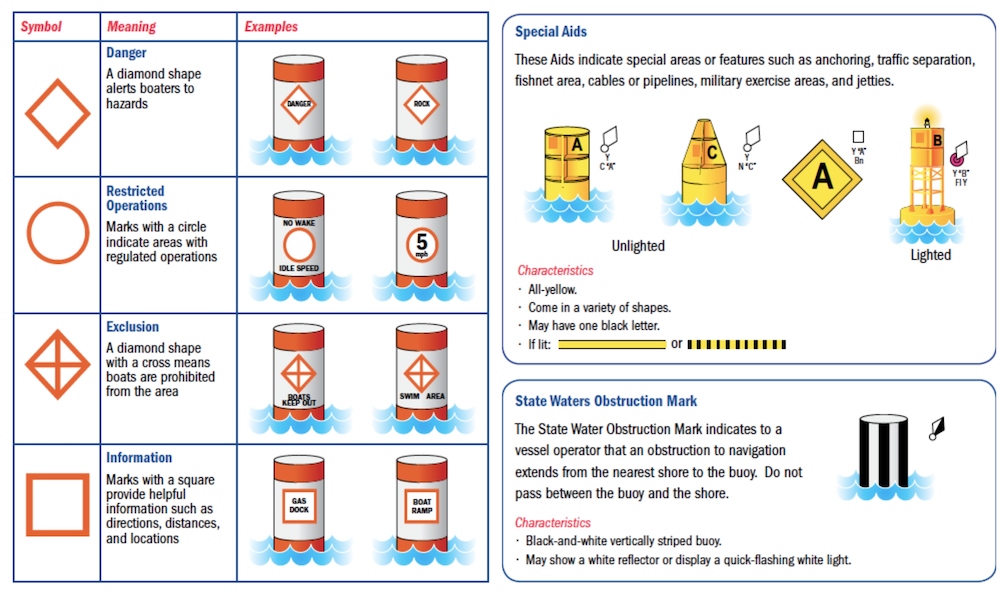

Well, there may not be any road signs or painted lines out on the water, but fortunately as boaters we have plenty of channel markers, buoys, and aids indicating everything from channels to no wake zones. But for someone who hasn’t spent years on the water, all those red markers and green buoys can be confusing.
Never fear, new boaters—we’re here to help.
All the different “road signs” of the water are called “aids to navigation.” These include fixed markers on poles and pilings as well as a variety of floating buoys that are anchored to the bottom. Why will you see a mix of fixed channel markers on poles, and floating buoys? Mostly, this is a matter of physical geography.
In deep water, it’s difficult to drive a piling, so putting a buoy there makes more sense. In other places, channels may shift and change over time, so again, utilizing a buoy (which can be moved and re-anchored at a later date) is the norm. But in areas where the bottom composition doesn’t change much over time and the water is shallow enough to drive a piling, a fixed marker (which doesn’t require as much regular maintenance) is often a better option.
The bottom line? What’s important to remember is that boaters should treat fixed markers and buoys exactly the same.
Also remember that some, but not all, markers and buoys will be lighted. Those that are lighted will blink at a specific frequency. These frequencies are marked on charts and chartplotters. So if you see a red one blinking every three seconds, for example, you can look at your chart, find the nearest red marker that blinks at that frequency, and easily identify the marker you’re looking at.

Most of the markers and buoys you’ll see will be either red or green, and these colors help identify which side you’ll want to pass them on to remain in a channel.
Hence, the old saying “red right returning.” Sometimes you’ll see an aid to navigation that has horizontal bands of both red and green. These mark the junction between two channels. In this case, the color that’s highest on the marker indicated the preferred or primary channel.
Another aid to navigation you may see are called “non lateral” aids to navigation. Each of these has their own specific use and meaning as follows:

In addition to all of these aids to navigation, you may also come across white buoys with a blue stripe. These don’t actually relate to navigation but keep your eyes out for them because they’re mooring buoys that people secure their boat to in harbors and anchorages. Remember that most are private and you need permission to use them.
Okay: now that you know what all those red markers and green buoys mean—as well as the yellows, blacks, whites, and oranges—you can effectively navigate your boat through most waterways. Of course, there’s more to getting where you’re going than just understanding the navigational aids. Be sure to read Marine Navigation: How to Navigate a Boat to get the complete scoop.
You May Also Like: